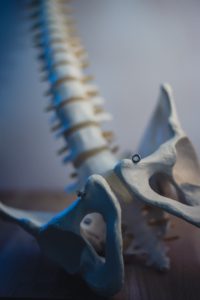 In the early days postpartum, mothers planning to breastfeed will typically be visited by a hospital lactation consultant or trained nurse in order to check how baby is feeding, and then 48 hours later you’re off and on your way home! Sometimes, concerns arise in those next few weeks, often sparked by pain with latching, difficulty gaining weight, or mother’s concerns with milk supply. These are all excellent reasons to meet with a certified lactation counselor (CLC). One of the primary details that a CLC will assess, as well as medical histories, is the latch. So what exactly is a “good” latch?
In the early days postpartum, mothers planning to breastfeed will typically be visited by a hospital lactation consultant or trained nurse in order to check how baby is feeding, and then 48 hours later you’re off and on your way home! Sometimes, concerns arise in those next few weeks, often sparked by pain with latching, difficulty gaining weight, or mother’s concerns with milk supply. These are all excellent reasons to meet with a certified lactation counselor (CLC). One of the primary details that a CLC will assess, as well as medical histories, is the latch. So what exactly is a “good” latch?
What Exactly Makes a Good Latch?
- An infant’s latching process should ideally start when the infant is quiet but alert and showing early feeding cues. A baby that is crying may need to be soothed before attempting to feed.
- Baby’s body should have shoulders and hips in alignment, with both hands around the breast, and the head turned towards mom. If you could read what was on baby’s shirt, you’d need to turn that baby tummy to tummy with mom.
- Baby’s latch should start with a big, open mouth, landing on the nipple with bottom lip and tongue first.
- Both upper and lower lip should seal around the breast, maintaining that wide mouth the entire feed.
Why Does it Hurt to Nurse My Baby?
Breastfeeding should really never hurt. Even in those first few days, when some soreness and adjustment can be noticeable, you should never feel like curling your toes or dreading the next nursing session. If you do, that’s okay! There are usually small adjustments that can be made to get you on the road to success. Some of the main reasons for pain while nursing include:
- A shallow latch, with baby attempting to pull milk too low on the breast tissue or nipple.
- Oral restrictions. Ah, those tricky tongue ties. A limitation in the movement of the tongue often leads to a baby who compensates with munching on the nipple – ouch!
- Clogged ducts and mastitis cause pain within the breast tissue that increase when baby latches. Be sure to feed on demand and avoid tight fitting bras or clothing to reduce the risk!
If this feels difficult, painful, or just confusing, a visit with a CLC is a great next step. Often times, nursing can be adjusted and improved in just a few visits. The early days of motherhood can be hard, but our CLC at MOSAIC is ready to support you! Also, check out the Office On Women’s Health for tons of additional information and resources.

 What is pelvic girdle pain? It is pain on the backside of your pelvis by your sacroiliac joints (SIJ). It can occur separately or with low back pain or pain on the pubic symphysis (front of your pelvis). The pelvis is made up of 2 bones that join together at the base of the spine (sacrum) and in the front (pubic bone). It is strong enough to support the body and flexible enough to absorb the impact of your feet hitting the ground. Pelvic girdle pain is most commonly seen during pregnancy and postpartum and is more common in women than men. This can also be caused by trauma or arthritis.
What is pelvic girdle pain? It is pain on the backside of your pelvis by your sacroiliac joints (SIJ). It can occur separately or with low back pain or pain on the pubic symphysis (front of your pelvis). The pelvis is made up of 2 bones that join together at the base of the spine (sacrum) and in the front (pubic bone). It is strong enough to support the body and flexible enough to absorb the impact of your feet hitting the ground. Pelvic girdle pain is most commonly seen during pregnancy and postpartum and is more common in women than men. This can also be caused by trauma or arthritis. During the COVID-19 pandemic, activity levels dropped for a lot of people. Between stay at home orders, gym closures, and working from home, people became more sedentary. On top of that, there were shortages of equipment like dumbbells and bicycles, making staying active at home difficult even if you wanted to. But this summer, things look different; vaccines are widely available, restrictions are loosening, and people are looking to get active and enjoy the warm weather. That’s all good news, but if you had a long break from activity, your body might not be ready to jump right back in. Here are a few tips for help with returning to activity after the pandemic without getting hurt:
During the COVID-19 pandemic, activity levels dropped for a lot of people. Between stay at home orders, gym closures, and working from home, people became more sedentary. On top of that, there were shortages of equipment like dumbbells and bicycles, making staying active at home difficult even if you wanted to. But this summer, things look different; vaccines are widely available, restrictions are loosening, and people are looking to get active and enjoy the warm weather. That’s all good news, but if you had a long break from activity, your body might not be ready to jump right back in. Here are a few tips for help with returning to activity after the pandemic without getting hurt: Pick’s disease is a rare condition that causes progressive and irreversible dementia. Unlike Alzheimer’s disease, Pick’s disease only affects certain parts of the brain. It is known as frontotemporal dementia (FTD) because it affects the frontal and temporal lobes of the brain. Our frontal lobes control our ability to plan, organize, make sound judgement, control our behavior and emotion, recall information and multi task. Our temporal lobes are responsible for our use of language and our emotional responses. In Pick’s disease an abnormal amount or type of protein collects in the nerve cells of the brain. This specifically occurs in the frontal and temporal lobes. This causes brain tissue to shrink. As a result, a person with Pick’s disease shows a slow progressive deterioration of behavior, personality and/or language. The exact cause is unknown. Scientists suspect a genetic link, thus making it a hereditary disorder.
Pick’s disease is a rare condition that causes progressive and irreversible dementia. Unlike Alzheimer’s disease, Pick’s disease only affects certain parts of the brain. It is known as frontotemporal dementia (FTD) because it affects the frontal and temporal lobes of the brain. Our frontal lobes control our ability to plan, organize, make sound judgement, control our behavior and emotion, recall information and multi task. Our temporal lobes are responsible for our use of language and our emotional responses. In Pick’s disease an abnormal amount or type of protein collects in the nerve cells of the brain. This specifically occurs in the frontal and temporal lobes. This causes brain tissue to shrink. As a result, a person with Pick’s disease shows a slow progressive deterioration of behavior, personality and/or language. The exact cause is unknown. Scientists suspect a genetic link, thus making it a hereditary disorder.